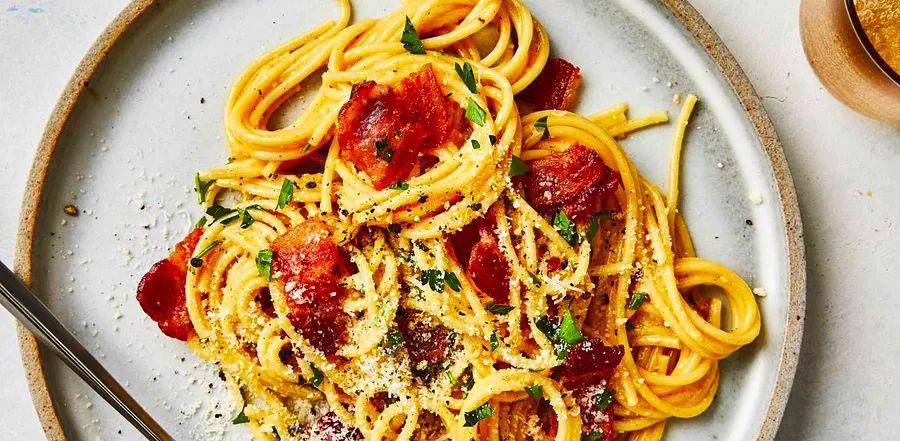Why an Italian Chef Says You Should Never Serve Pasta and Sauce Separately

There's nothing that makes my pasta-loving Italian soul cringe more than seeing a plate of lonely pasta with a huge dollop of sauce just sitting on top. If you've ever drained pasta and left it for a few minutes, you know how quickly it turns into a sticky mess, so putting the sauce on top only makes things worse.
It might seem like an extra step, but combining your pasta with sauce is the simplest way to elevate your meal. But how do top restaurants make their pasta sauces so creamy and flavorful? The answer is easy — mantecare.
What exactly is Mantecare?
Mantecare is commonly associated with making risotto; the delicate process of stirring the rice to release its starch, adding liquid gradually, and finishing with butter and cheese. When it comes to pasta, mantecare is the magic that happens when you combine starchy pasta water, fat, and cheese; all mixed together vigorously to create the perfect sauce.
The Secret Ingredient
Mantecare relies on a crucial Italian kitchen secret: pasta water. The starch it holds gives the dish a unique consistency, thickening the liquid and enriching the texture. Italians believe in the perfect union of ingredients—pasta and sauce served separately is far from that. The starch acts like glue, bringing pasta, sauce, and fats together into one harmonious dish.
Using pasta water is also key to properly finishing pasta. Drain it just before the recommended time (save a cup of the water), and let it complete cooking in the sauce. This allows the starch to infuse the sauce, helping the pasta absorb the flavors and bringing everything together in a delicious, unified dish.
The Art of Mixing
Another essential part of mantecare is the thorough mixing. This not only helps form an emulsion between the fat and pasta water, but it also loosens the starch sticking to the pasta's surface. Vigorous stirring releases the starch, blending it into the sauce for a smooth and cohesive result.
It might take a few tries to master, but mix with all the energy you've got. Start by adding a splash of pasta water, then turn off the heat and remove the pan from the burner before tossing in the butter and cheese. While mixing, grab the pan's handle and gently rock it back and forth to increase the mixing force. A wooden spoon is a go-to tool, but metal tongs work well too since their two contact points allow for double the mixing power.
The Richness
The final ingredient in this magic is fat. For pasta dishes, this usually means butter and cheese, typically grated Parmesan or pecorino. The hot, starchy pasta water helps melt the butter and cheese, while the vigorous mixing incorporates everything into a smooth sauce.
The trickiest part is blending the fat into the pasta water to create an emulsion. This, combined with the thick pasta water, gives the sauce its creamy, velvety texture. As soon as you add the butter, start stirring furiously. Once it's melted in, quickly add your grated cheese and continue mixing until it’s fully combined.

1

2

3

4

5
Evaluation :
5/5